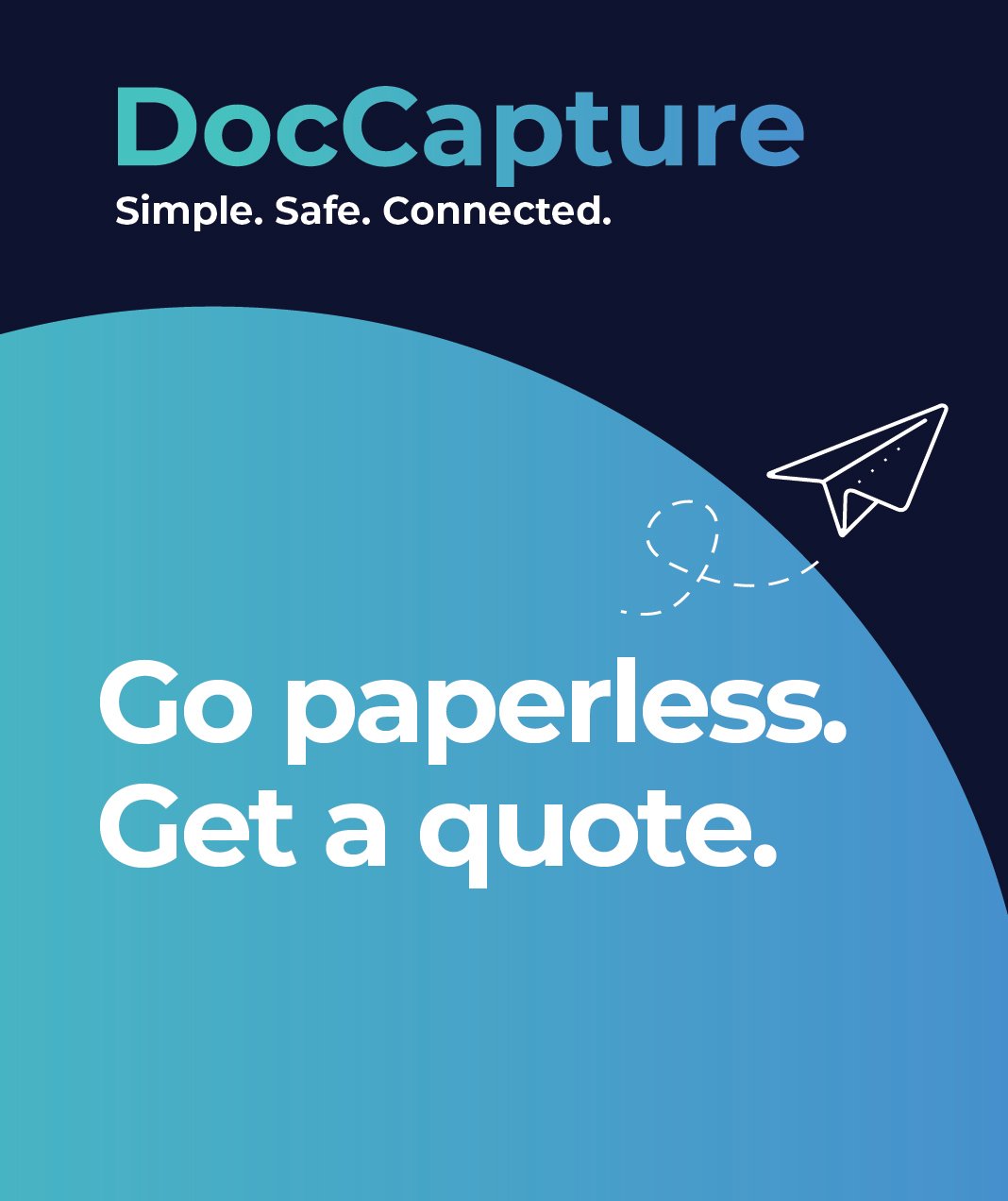Balancing Budget Constraints with the ROI of Document Scanning
Table of contents
For nonprofit leaders already juggling limited resources, aging systems, and compliance headaches, the thought of digitizing decades of paper records can feel daunting—and expensive. But what if that investment could actually save your organization money, streamline your operations, and better equip your team to serve your mission?
In this post, we’ll explore the ROI of document scanning for nonprofits, breaking down how the upfront costs of scanning physical records are often far outweighed by the long-term benefits. From cutting storage expenses to improving audit readiness, the transition to digital documents isn’t just a tech upgrade—it’s a strategic move that supports your team, your compliance needs, and ultimately your mission.
Whether you're an Executive Director eyeing efficiency, an IT Manager concerned about access and security, or a Finance lead facing the next audit cycle, understanding the value of document scanning can help you make smarter operational decisions.
The Hidden Costs of Paper-Based Processes
For many nonprofits, paper-based processes seem harmless—just part of how things have always been done. But the hidden costs of maintaining physical records can quietly drain your budget and staff productivity.
Storage Costs Add Up Quickly
From filing cabinets taking up valuable office space to offsite storage fees, physical documents come with a literal footprint. That’s space that could be repurposed for mission-critical operations—or money redirected toward programs. One mid-sized nonprofit reported spending over $5,000 annually on offsite storage alone, just to keep years of donor and compliance records accessible.
Time Is Money: The Inefficiency of Retrieval
When staff spend hours searching for the right form, invoice, or donor file, it’s not just frustrating—it’s costly. Manual retrieval means time lost from high-impact tasks. A digital system, by contrast, offers searchable records accessible in seconds, boosting overall productivity.
Compliance Risks and Audit Challenges
Paper records increase the risk of lost or misplaced documents—especially critical ones needed during audits or grant reviews. Failing to produce documentation quickly can put funding at risk or even result in penalties. Digitizing documents enhances both accuracy and readiness for compliance checks.
Want to see how document scanning directly supports nonprofit compliance? Check out our full guide on Document Scanning for Nonprofits.
For a broader view of how digital transformation supports mission impact, read: Nonprofits & Digital Transformation: Maximizing Mission Impact
What Document Scanning Entails (and Why It's Not Just a Tech Upgrade)
When nonprofits hear "document scanning," they often picture stacks of paper being converted into PDFs. But the ROI of document scanning for nonprofits goes far beyond simple digitization—it's about transforming how your organization manages information.
What Is Document Scanning, Really?
At its core, document scanning is the process of converting physical paper records into digital formats. These digital files are typically stored in a secure, cloud-based system and made searchable through OCR (optical character recognition) technology. But it’s more than going paperless—it’s laying the groundwork for a smarter, more agile organization.
Unlocking Better Workflows and Secure Access
Once digitized, your documents become easier to manage, access, and share—no matter where your team works from. Imagine a grant manager retrieving past proposals in seconds, or finance staff preparing for an audit without digging through file drawers.
Security is also enhanced. With digital systems, you can set permissions, track access, and ensure sensitive data is protected—features paper simply can’t offer.
Searchability Means Real-Time Efficiency
Searchable documents dramatically reduce time spent locating critical information. This is especially valuable during tight audit windows, donor meetings, or compliance reviews—when quick, accurate access to information is key.
For a closer look at how scanning improves nonprofit operations, visit our article on Scanning Nonprofit Records.
ROI Drivers for Nonprofits
For mission-driven organizations, every dollar must be justified—and ideally, multiplied in value. That’s where the ROI of document scanning for nonprofits becomes especially clear. It’s not just about saving money—it's about creating new capacity and reducing risk in ways that directly support your mission.
1. Long-Term Cost Savings
Paper takes up space, requires maintenance, and involves staff time. By eliminating physical storage and reducing manual labor, nonprofits can significantly lower their operational costs. Digitization also helps avoid late fees, missed deadlines, or compliance penalties that can result from misplaced paperwork.
Example: A regional nonprofit that digitized 10 years of records saved over 60% in annual storage costs and reallocated that budget toward program expansion.
2. Grant Compliance and Audit Readiness
Most grants require stringent documentation, and audits can come with little notice. Scanned documents are easier to organize, retrieve, and present. This not only ensures compliance but helps maintain your credibility with funders.
Real-world impact: One national advocacy group improved its audit turnaround time by 70% after going digital, earning praise from both auditors and donors.
3. Staff Efficiency and Donor Satisfaction
When staff can easily access donor records, reports, and historical files, they’re empowered to work faster and more accurately. This efficiency improves internal morale and enhances external relationships—especially with donors who expect timely, personalized communication.
All of these gains are part of a broader strategy, not just a tech change. As covered in Document Scanning for Nonprofits, investing in digitization is a key part of becoming a more resilient, impact-driven organization.
Addressing Common Objections
Even with clear benefits, many nonprofits hesitate to embrace document scanning. Whether it’s concern over budget, complexity, or disruption, these objections are valid—but they’re also manageable. Here’s how to reframe them:
“We don’t have the budget.”
Upfront costs are a real concern for nonprofits. However, the ROI of document scanning for nonprofits comes from long-term savings—not just immediate gains. Reduced storage fees, fewer staff hours spent retrieving documents, and avoided compliance penalties all add up quickly.
Pro tip: Some organizations have successfully written scanning into grant budgets as a technology or infrastructure upgrade, since it directly supports operational capacity.
“Our current system works fine.”
Many nonprofits operate with legacy filing systems simply because they’re familiar. But "fine" often hides inefficiencies. Manual filing eats up time, increases the risk of error, and makes collaboration harder—especially in hybrid or remote work settings. A digital system doesn’t replace your workflow; it enhances it.
“We’re not tech-savvy.”
Digital transformation can feel overwhelming, but you don’t have to go it alone. Providers like DocCapture specialize in guiding nonprofits through the scanning process with minimal disruption. From project planning to secure file delivery, you're supported every step of the way.
“What about security?”
Security is often stronger with digital systems than with paper. Digitized records can be encrypted, access-controlled, and backed up in the cloud—far more secure than a filing cabinet. Plus, digital records support compliance with data privacy regulations and audit standards.
Still unsure? DocCapture’s document scanning services are built specifically with nonprofit needs in mind—including affordability, security, and ease of use.
Conclusion
In the nonprofit world, every operational decision must serve the greater mission—and document scanning is no exception. As we've shown, the ROI of document scanning for nonprofits is not just theoretical. It’s measurable, practical, and aligned with the goals nonprofit leaders care about most: efficiency, compliance, cost savings, and staff empowerment.
While the initial investment may seem daunting, the long-term benefits are both financial and strategic. Scanning paper records isn't about adopting new tech for tech’s sake—it's about building a more resilient, organized, and agile organization that can focus more energy on what truly matters.
If you're ready to explore how digitizing your records could help your organization save time, reduce costs, and improve compliance, fill out our “get a quote” form to start the conversation. We’re here to guide you every step of the way.
Share this
You May Also Like
These Related Stories

Securing Your Digital Frontier: Best Practices in Protecting Scanned Documents

Enhance Efficiency: The Best Solution for Your Business

